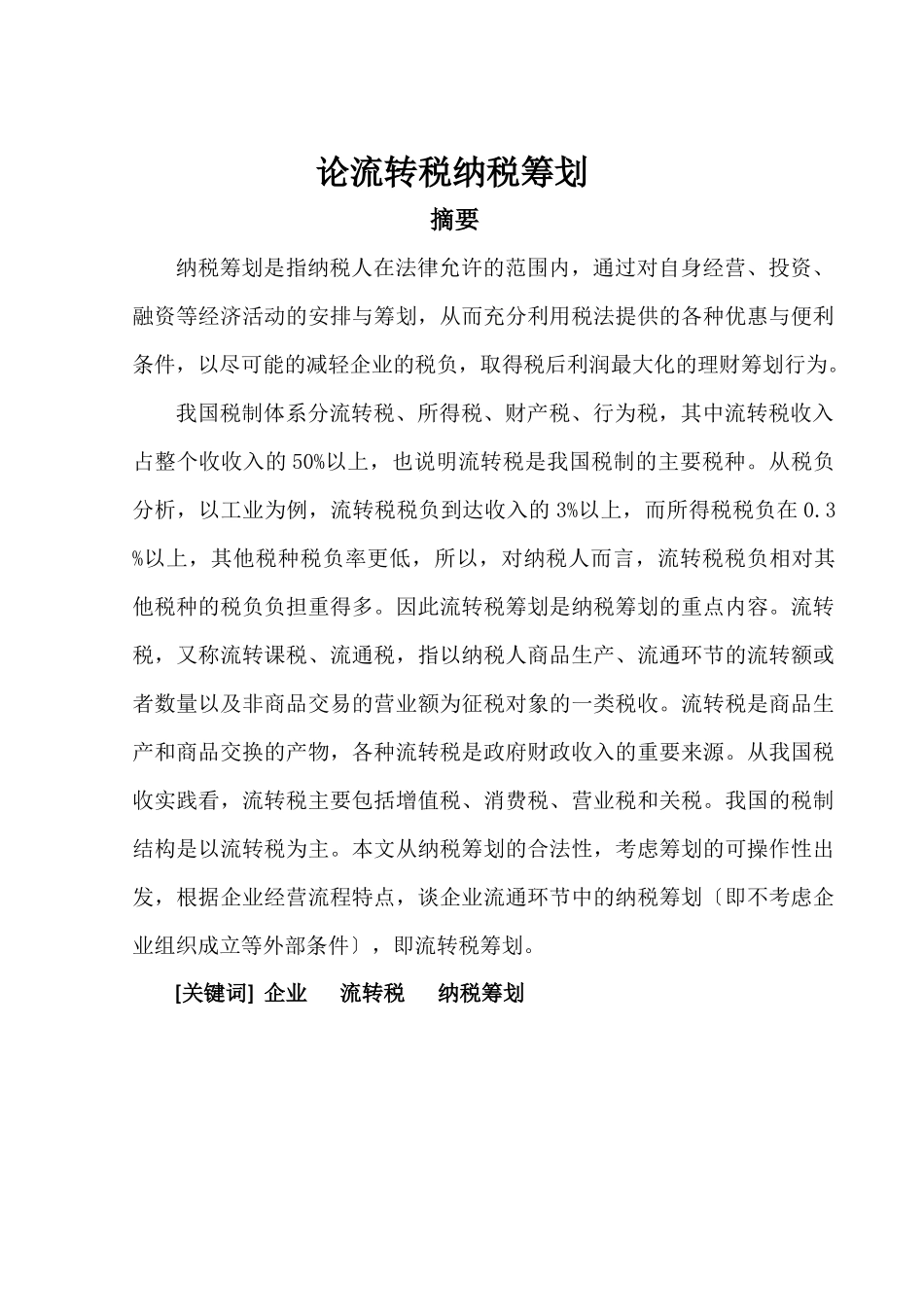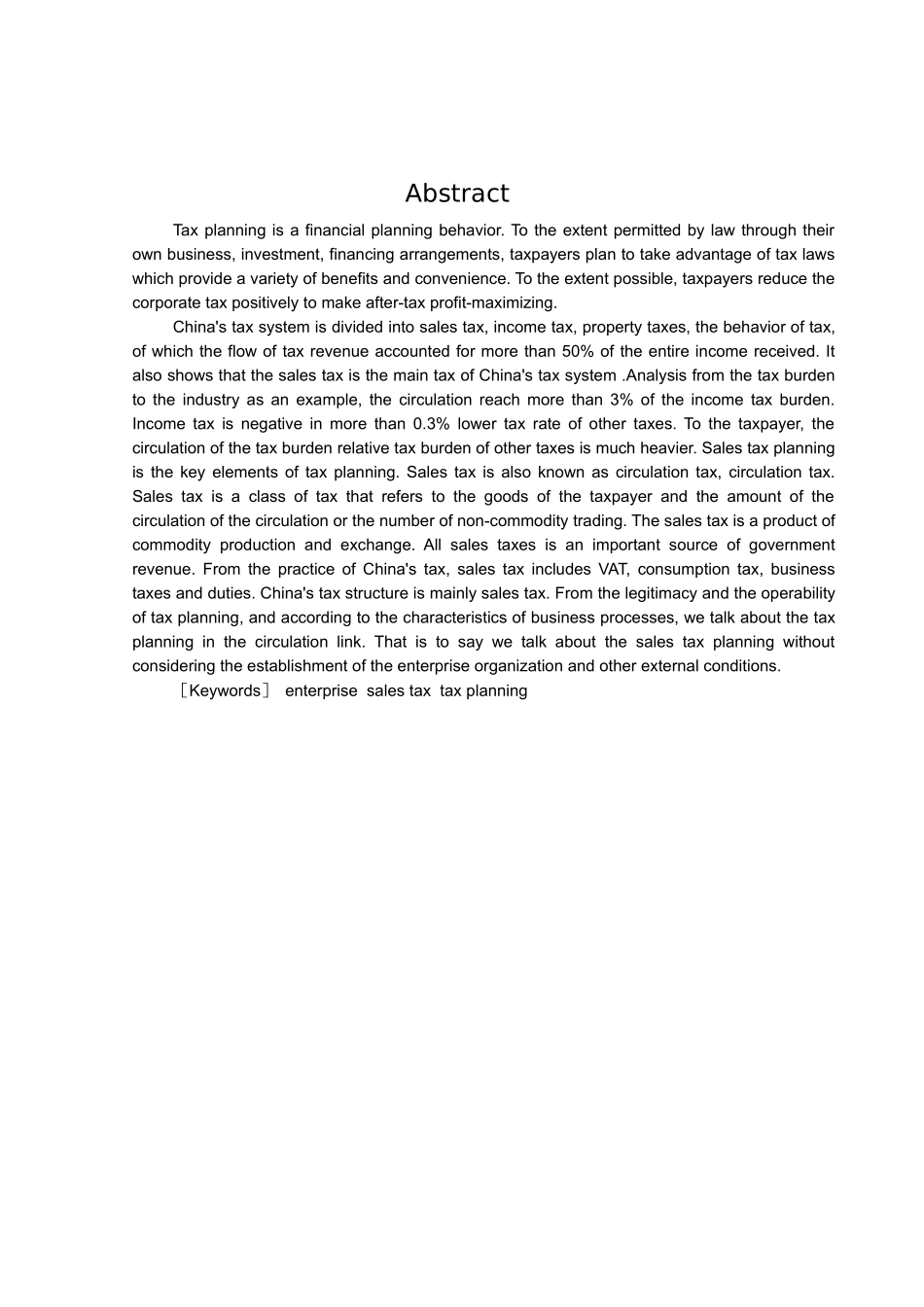论流转税纳税筹划摘要纳税筹划是指纳税人在法律允许的范围内,通过对自身经营、投资、融资等经济活动的安排与筹划,从而充分利用税法提供的各种优惠与便利条件,以尽可能的减轻企业的税负,取得税后利润最大化的理财筹划行为。我国税制体系分流转税、所得税、财产税、行为税,其中流转税收入占整个收收入的 50%以上,也说明流转税是我国税制的主要税种。从税负分析,以工业为例,流转税税负到达收入的 3%以上,而所得税税负在 0.3 %以上,其他税种税负率更低,所以,对纳税人而言,流转税税负相对其他税种的税负负担重得多。因此流转税筹划是纳税筹划的重点内容。流转税,又称流转课税、流通税,指以纳税人商品生产、流通环节的流转额或者数量以及非商品交易的营业额为征税对象的一类税收。流转税是商品生产和商品交换的产物,各种流转税是政府财政收入的重要来源。从我国税收实践看,流转税主要包括增值税、消费税、营业税和关税。我国的税制结构是以流转税为主。本文从纳税筹划的合法性,考虑筹划的可操作性出发,根据企业经营流程特点,谈企业流通环节中的纳税筹划〔即不考虑企业组织成立等外部条件〕,即流转税筹划。[关键词] 企业 流转税 纳税筹划AbstractTax planning is a financial planning behavior. To the extent permitted by law through their own business, investment, financing arrangements, taxpayers plan to take advantage of tax laws which provide a variety of benefits and convenience. To the extent possible, taxpayers reduce the corporate tax positively to make after-tax profit-maximizing.China's tax system is divided into sales tax, income tax, property taxes, the behavior of tax, of which the flow of tax revenue accounted for more than 50% of the entire income received. It also shows that the sales tax is the main tax of China's tax system .Analysis from the tax burden to the industry as an example, the circulation reach more than 3% of the income tax burden. Income tax is negative in more than 0.3% lower tax rate of other taxes. To the taxpayer, the circulation of the tax burden relative tax...


